In 1900, Rogers City was a modest northwoods settlement built on logging and sawmilling. Timber entrepreneurs like Albert Molitor and Herman Hoeft had dominated the local economy in the late 19th century, running rival lumber camps and company stores. By the early 1900s, however, the great pine forests were nearly exhausted and the lumber companies moved on. A devastating wildfire in October 1908 – known as the Metz Fire – swept through Presque Isle County, threatening Rogers City itself before dying out at Lake Huron’s shore. This calamity underscored the end of the logging era and left the community seeking a new economic lifeline.
Video
From Lumber Roots to Industrial Growth
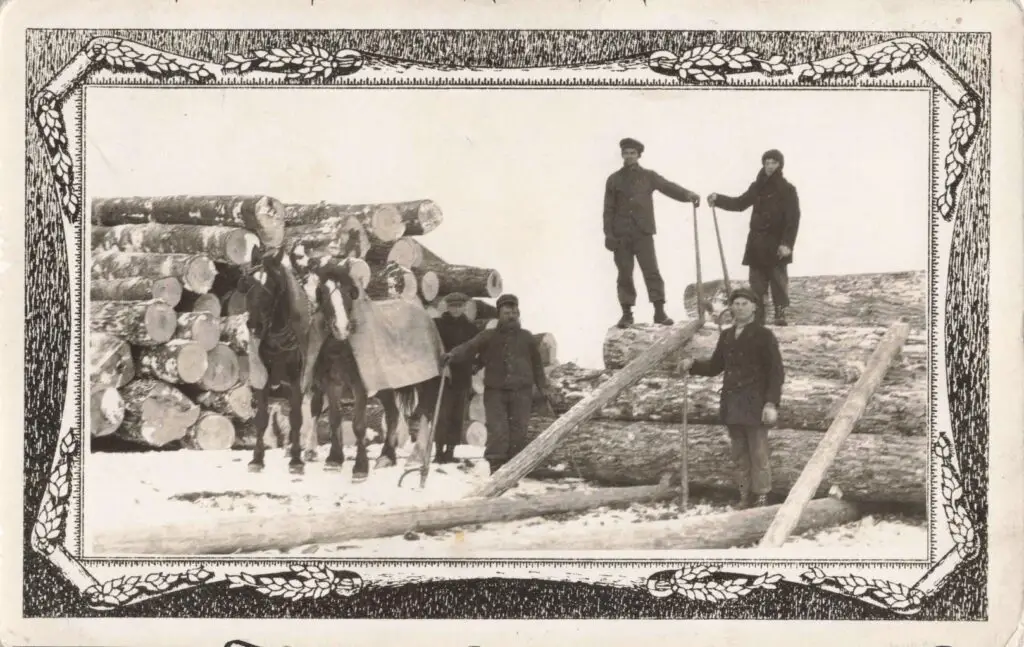
At the beginning of the 20th century, Rogers City, Michigan was still defined by lumber. Its streets were simple and its economy tied to sawmills. The Metz Fire of 1908 highlighted the fragility of that world. By 1910, with timber supplies nearly gone, the town faced uncertainty. What lay ahead would reshape it entirely.
The Opening of the Calcite Quarry
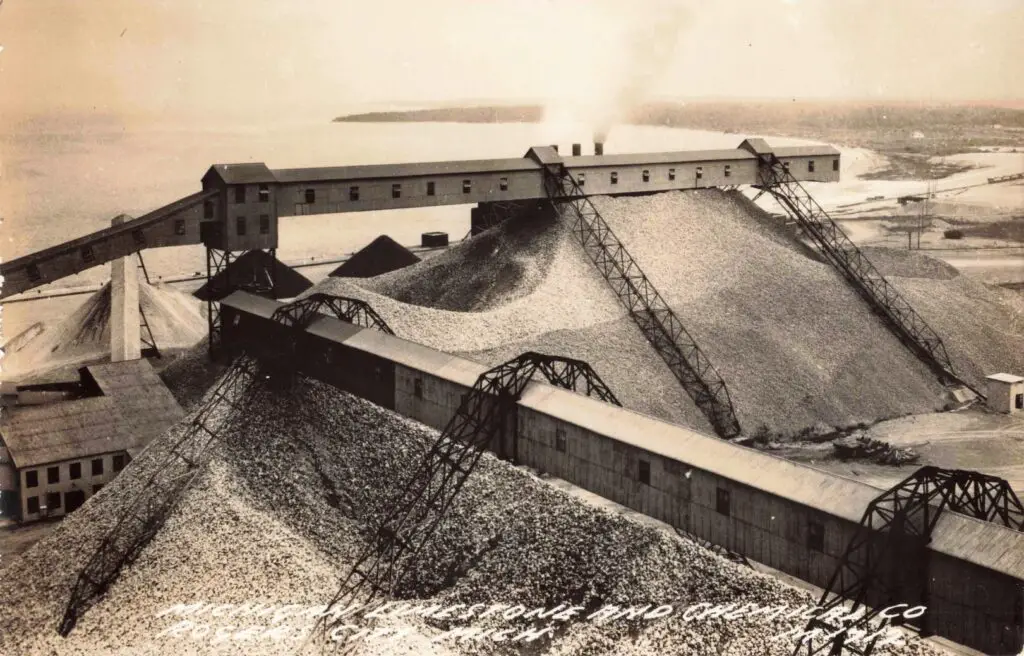
Geological surveys confirmed that Rogers City sat atop one of the world’s purest and largest limestone deposits. In 1910, investors created the Michigan Limestone and Chemical Company. By 1912, the Calcite Quarry was operating. Steam shovels, crushers, and narrow-gauge railways moved stone to waiting freighters. That first shipment marked the beginning of a new era. The quarry would become the largest of its kind in the world.
A Community Transformed
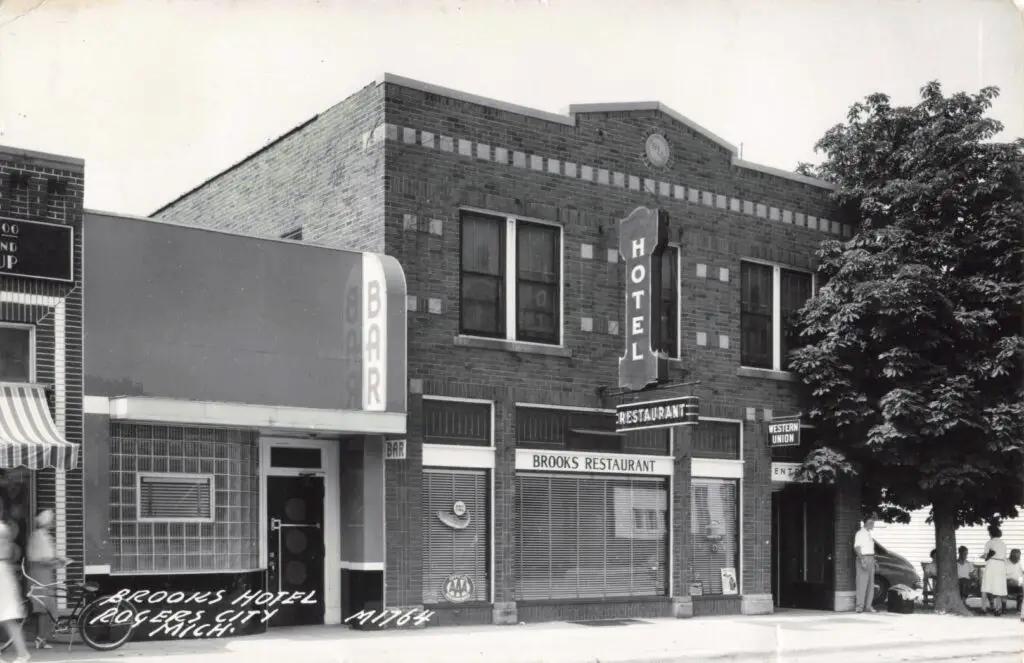
The quarry drew workers from across Michigan, the Midwest, and Europe. Rogers City’s population tripled between 1910 and 1920. New homes, schools, and businesses followed. Downtown changed from wood-framed shops to sturdy brick blocks. Hoeft’s Store grew into a department store, offering everything from clothing to hardware. By the late 1920s, hotels like the Brooks provided lodging for visiting businessmen, ship captains, and travelers.
Shipping and the Bradley Fleet
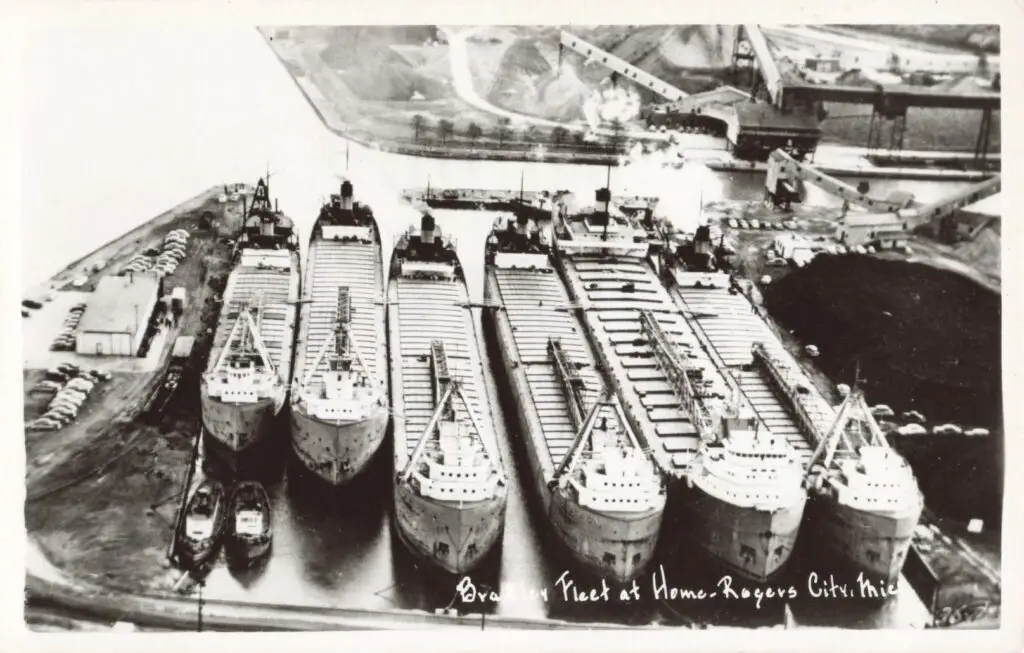
Limestone required transportation, and Rogers City became a Great Lakes shipping hub. The Bradley Transportation Company operated a fleet of self-unloading freighters from the Port of Calcite. These ships carried stone to steel mills and cement plants across the Midwest. The sight of the fleet docked side by side was a source of local pride. Rogers City became known as “The Nautical City.”
Parks and Recreation
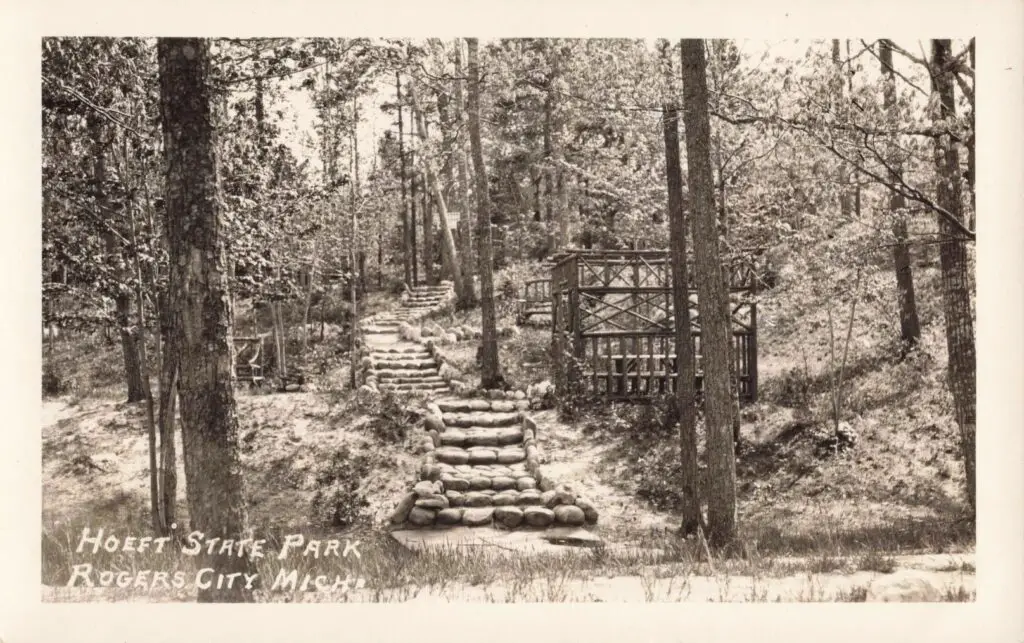
Not all of Rogers City’s growth was industrial. In 1922, Paul Hoeft donated shoreline north of town for a new state park. Hoeft State Park offered camping, picnicking, and access to Lake Huron’s shoreline. Within the city, the bathing beach became a popular gathering spot, complete with a band shell, playground, and lifeguard station. These spaces balanced the heavy work of quarrying with leisure and family life.
The World War II Era

During World War II, Rogers City’s limestone became vital for America’s war effort. The stone was used to produce steel for ships, tanks, and aircraft. The quarry worked at full capacity, and the Bradley fleet carried heavy loads season after season. Families contributed both in the pit and on the freighters. Rogers City’s role in the war cemented its place in national industry.
A City Comes of Age

By 1950, Rogers City was no longer a lumber outpost. It had become a thriving port city with nearly 4,000 residents. Schools, churches, and hospitals served a growing population. Its identity as both a quarry town and a maritime community defined its character. Known across the Great Lakes, Rogers City stood as the limestone capital of America.
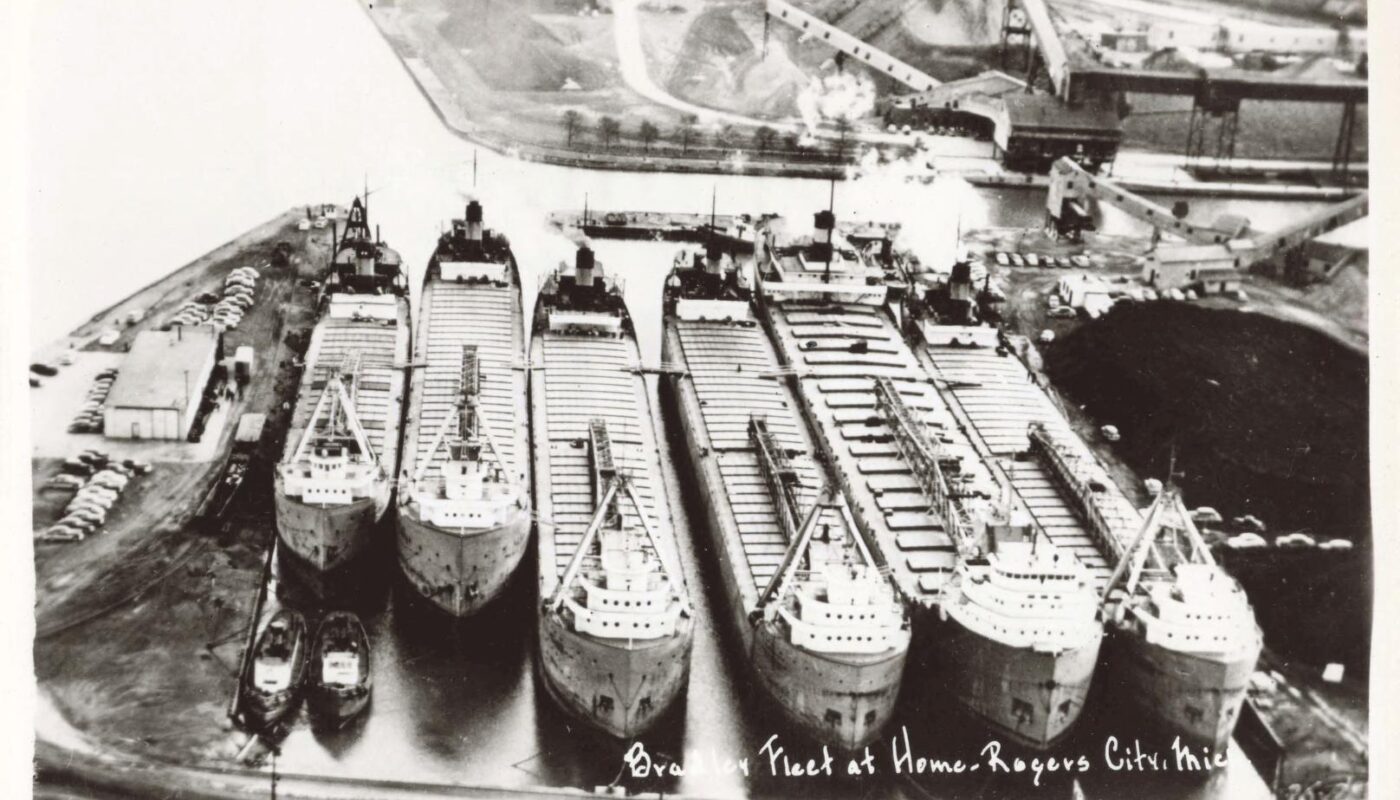
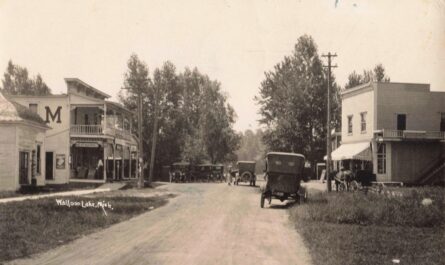
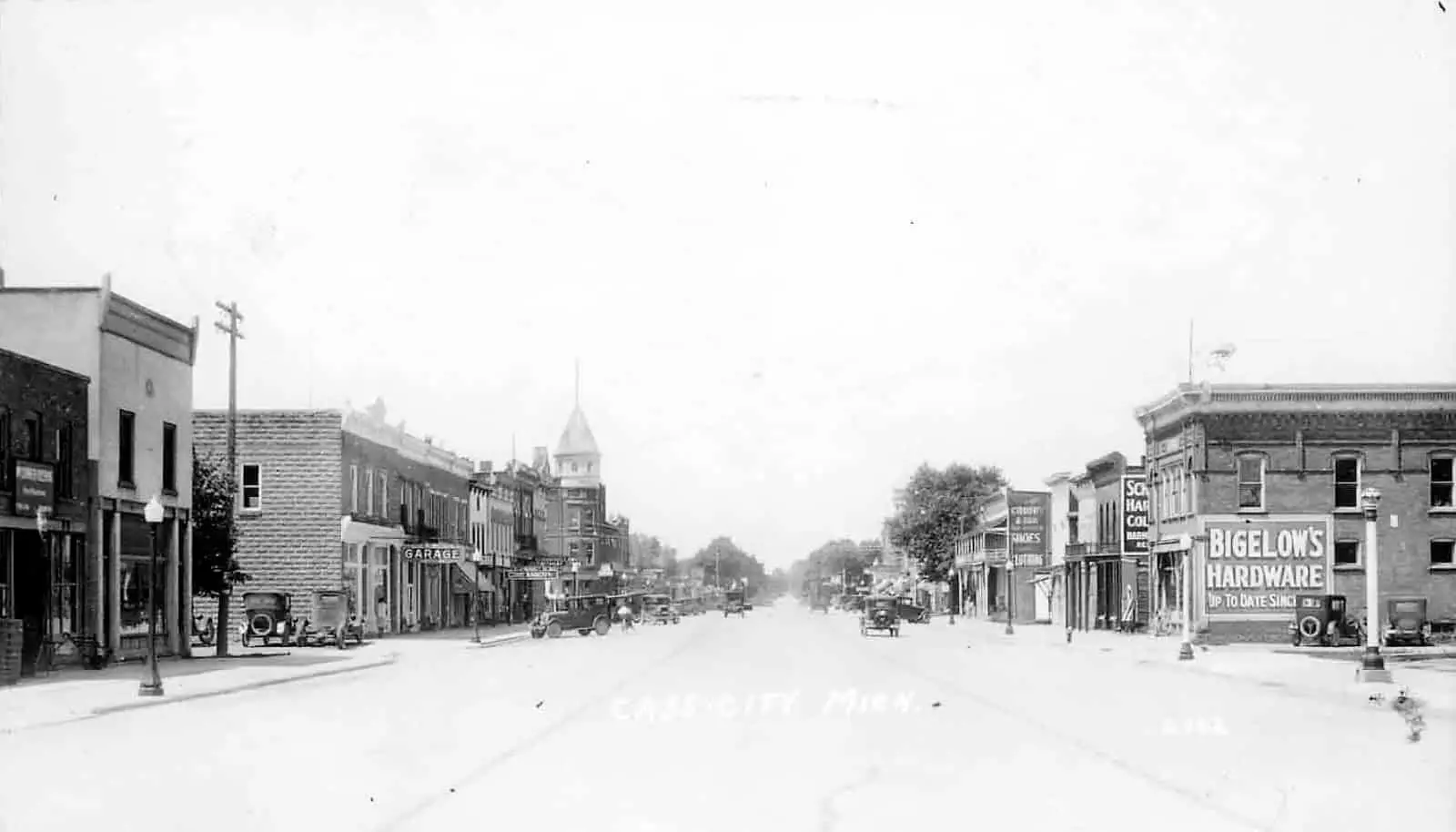

One thought on “History of Rogers City Michigan – From Logging Camps to the World’s Largest Quarry”
Comments are closed.